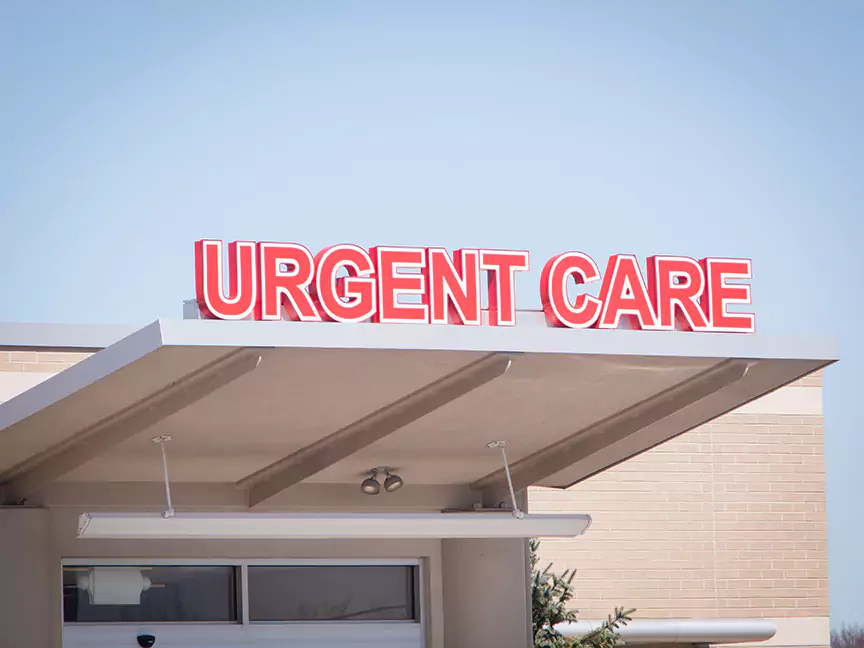When your child is sick or injured, the process of figuring out who and where to turn to can be overwhelming. This is especially so for families who are new to the U.S. healthcare system. One good starting point is understanding the role of pediatric urgent care — how it offers a bridge between your own doctor or child’s primary care physician and emergency room services by providing timely care for non-life-threatening conditions.
What is Pediatric Urgent Care?
Pediatric urgent care centers specialize in treating children’s healthcare needs in a setting designed for less severe medical issues. Unlike emergency rooms, these compassionate care centers focus on services for conditions like minor injuries, fevers, or infections, without the long waits and high costs associated with hospital ERs.
Expertise of Pediatric Urgent Care Professionals
Pediatric urgent care centers are staffed by board-certified pediatricians and nurses who possess the same qualifications and skills as those found in a family’s primary care physician’s office.
These professionals specialize in caring for children — from infants to teenagers. Their job is to ensure that each patient receives the highest quality medical care tailored to their specific needs. Their expertise allows them to quickly diagnose and treat childrent with a wide range of illnesses and injuries, providing both parents and children with peace of mind during urgent health situations.

What are the Common Illnesses and Injuries Covered at Pediatric Urgent Care Centers?
Pediatric urgent care centers are equipped to handle a wide range of treatments for common illnesses and injuries, providing a quick, convenient option for families. Here’s a list of conditions typically treated, alongside additional services offered:
Illnesses
Respiratory Infections: Such as colds, flu, bronchitis, and pneumonia.
Gastrointestinal Issues: Including stomach viruses, nausea, diarrhea, and dehydration.
Ear Infections: Common in children, leading to pain and fever.
Sore Throats: Evaluation of strep throat and tonsillitis.
Skin Infections: Treatment for conditions like impetigo, ringworm, or cellulitis.
Allergies: Management of symptoms and allergic reactions.
Injuries
Cuts and Scrapes: Wound cleaning and closure with stitches or glue when necessary.
Sprains and Strains: Assessment and immobilization of minor musculoskeletal injuries.
Minor Burns: Treatment and dressing of first and some second-degree burns.
Fractures: X-ray services to diagnose broken bones and provision of splints or casting.
Additional Services
X-Rays: On-site imaging to assist in diagnosing injuries.
Sports Physicals: Comprehensive physical examinations are required for sports participation.
Vaccinations: Keeping children up-to-date with their immunizations.
Lab Testing: For rapid diagnosis of infections like strep throat, flu, or mono.
As a bridge between primary care physicians and the emergency room, these centers ensure children receive appropriate care for their urgent health needs in a child-friendly environment.
Why You Should Choose Urgent Care Services
Opting for pediatric urgent care can save time and money. With extended hours and availability during weekends, these centers are a convenient option for busy families.
An added benefit is that the cost of treatment is generally lower than that of emergency room visits.

Families Can Consider Pediatric Telemedicine: A Convenient Alternative
Telemedicine services offer virtual consultations for non-emergency situations that still require professional advice. This can be especially beneficial for addressing health concerns outside regular clinic hours or when in-person visits with doctors are challenging.
The telemedicine approach allows parents to consult pediatricians from the comfort of their home, ensuring that children receive timely medical attention and advice without the need to visit a clinic physically.
Benefits of Using Online Consultations
Accessibility: Telemedicine breaks down geographical barriers, providing access to pediatric care even in remote areas.
Convenience: Parents can schedule consultations around their routine, avoiding the hassle of travel and wait times.
Safety: Reduces the risk of exposure to other illnesses, which is particularly beneficial during flu season or outbreaks.
Continuity of Care: Enables ongoing management of chronic conditions or follow-up visits without the need for physical office visits.
Types of Sickness or Illness Handled with Telemedicine
Telemedicine is ideal for managing a range of non-emergency medical needs and issues, including:
Common Colds and Flu: Symptoms like cough, sore throat, and fever can be evaluated and managed through telemedicine.
Mild Asthma: Routine asthma check-ups and management of mild symptoms can be effectively handled online.
Skin Conditions: Rashes, eczema, and minor infections can be diagnosed through video consultations, with advice on treatment provided.
Allergic Reactions: Non-severe allergic reactions, such as hay fever or mild food allergies, can be discussed, with guidance on symptom management.
Stomach Issues: Gastrointestinal problems like diarrhea, constipation, or mild abdominal pain can be assessed by a pediatrician remotely.
Behavioral Health: Telemedicine provides a platform for discussing behavioral issues, mental health concerns, or developmental disorders with a specialist.
Follow-up Visits: Routine follow-ups for chronic conditions, medication adjustments, and review of ongoing treatment plans.

Pediatric Emergency Medicine Tips for Immigrant Families
Finding the right pediatric urgent care center usually requires research and preparation. One important tip is to make sure you look for centers with good reviews. You can also ask fellow immigrants for recommendations, and prepare a list of questions or concerns before your visit.
And remember: communication with your child’s regular pediatrician is key to ensuring continuity of care.
Check if Your Insurance Plan is Accepted
Pediatric urgent care centers accept most insurance plans. That said, it is important that you clarify with them the types of insurance they would accept. This can help your family prepare for and manage the costs of healthcare.
Major Health Insurance Plans
Most pediatric urgent care facilities accept:
Private Insurance: Coverage from major insurance companies.
Medicaid: For eligible families, providing comprehensive coverage.
State-Sponsored Health Insurance Programs: Specific to children’s healthcare needs.
ACA Health Marketplace Plans: Most ACA plans are accepted by urgent care centers
In-Network vs. Out-of-Network
In-Network: Lower costs due to agreements between care providers and insurance companies.
Out-of-Network: Higher costs, but many urgent cares offer reasonable self-pay options for uninsured or out-of-network visitors.
Direct Pay and Self-Pay Options
For those without insurance or with high deductible plans, many pediatric urgent care centers offer self-pay rates. These rates are typically transparent and provided upfront.
Verifying Coverage
It’s crucial for families to verify their insurance coverage before visiting an emergency department or an urgent care center. So make sure you contact the insurance provider or the urgent care facility directly for clarity on coverage, copays, and any required documentation.
Pediatric Urgent Care For Children
Pediatric urgent care is an invaluable resource for immigrant families that offers accessible, child-focused medical care. By understanding how these centers operate and how they fit into your child’s healthcare routine, you can make informed decisions about quality care, that ensure prompt and effective treatment when needed.

